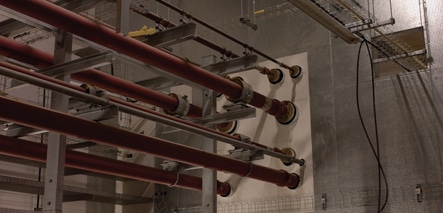The UK market for passive fire protection products grew by around 2% in 2017 and is estimated to be worth around £650m at manufacturers selling prices – excluding installation, according to new research from AMA Research. Forecasts indicate a more subdued performance beyond 2018, reflecting lower levels of construction activity anticipated as investor confidence has fallen in the lead up to Brexit.
The ‘Passive Fire Protection Market Report- UK 2018-2022’ report said that key drivers, such as the regulatory aspects of the fire protection sector, are expected to remain unchanged in the short term, since the Hackitt Review into the Grenfell Tower disaster only covered high-rise buildings and provided no recommendations for immediate change in the technical aspects of Building Regulations. However, modifications are expected in the medium to longer term, and AMA Research also anticipates that there will be other implications for the wider industry, as manufacturers and specifiers alike seek to provide safer environments, possibly leading to positive growth by value.
Forecasts in the medium-term are for modest growth, with slightly higher growth levels by 2020. While the longer-term impact of Brexit remains unclear, investors are likely to remain cautious, and this has resulted in recent forecasts being less optimistic for overall construction sector output growth.
In the short term, activity in the non-domestic construction sector is likely to slow down, with more subdued growth of around 1-2% 2018-19. The overall market for passive fire protection products such as cable, glass, ceilings, partitions and doors, is dependent on the performance of key construction sectors, such as offices, industrial, entertainment, health and education.
In terms of output, new office construction is forecast to be less positive over 2018-22, following strong output growth of 70% between 2013 and 2017, something which may impact on demand in sectors such as structural fire protection, suspended ceilings and partitions.
However, the hotel and entertainment sector has shown good growth in recent years and is attracting substantial investment, especially in the budget sector. The university sector has also been positive in terms of new orders in 2018, with future output having the potential to be boosted by demand for new accommodation and facilities for additional students following the removal of the cap on student numbers.
Uncertainty regarding Brexit is expected to have less of an impact on residential construction, where the outlook remains modestly positive, driven in particular by the ongoing imbalance between demand and supply for new housing. Increasing numbers of new flats and apartments built will be the primary source of demand for passive protection in the residential sector.
Other factors influencing the market include the performance of Sterling against both the US dollar and the Euro. Since the 2016 Referendum, Sterling’s fall in value and continued relative weakness has meant that materials price inflation has become a key influence in the UK construction market. If this situation continues, it will prompt some value growth in the passive fire protection sector, since a wide range of materials and products is imported.
The passive fire protection market includes fire resistant doors, fittings and intumescent seals, cables, partitions and suspended ceilings, glass, structural protection and ductwork and damper systems. Fire resistant doors, fitting and seals account for the largest shares of the market, with around 60% of the total value.
Recent product innovations in the sector include; intumescent coatings with faster drying times, electronic fire door closers that are linked to fire alarm systems, and more flexible fire stopping pipe collars that allow a greater range of applications compared to conventional collars.


